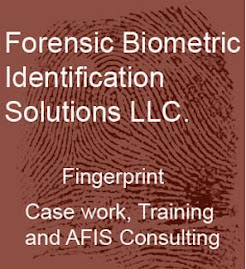Our training course is open to everyone, you do not need to work in law enforcement to take our training. I see many advantages to a Law Office that would like to be able to determine when an expert fingeprint examiner is required since our course at is so reasonably priced. The training course adhere's to the Scientific Working Group Fingerprint Ridge Analysis, Study and Technology training guidelines for latent examiners. Goals expected from this training include:
Ability to properly conduct a comparison and render a proper and accurate conclusion.
Understanding the use of fingerprints, palmprints in criminal and civil applications.
Understanding Friction ridge examination (analysis, comparison, evaluation, and verification).
Ability to analyze friction ridge details to determine the value for comparison.
Recognize/utilize ridge flow, scars, creases, and other detail supporting examination.Recognize and properly determine,the area from which the friction ridges originated.
Properly analyze latent impressions,understand pressure distortion,slippage, and overlays.
Documentation of a latent examination.Ability to produce a court exhibit.
Understand Daubert.
The Benefits to an Office are many:
Course is reasonably priced at $378 total
The student is able to progress at their own rate
No per diem or travel costs.
Comparisons in question can be explained using electronic exhibits, similar to court exhibits
Sincerely
Robert McAuley
Fingerprint Biometric Identification Solutions LLC.
Omaha, NE
ph: 402-321-3933
alt: 402-707-9013
FBIS @cox .net










